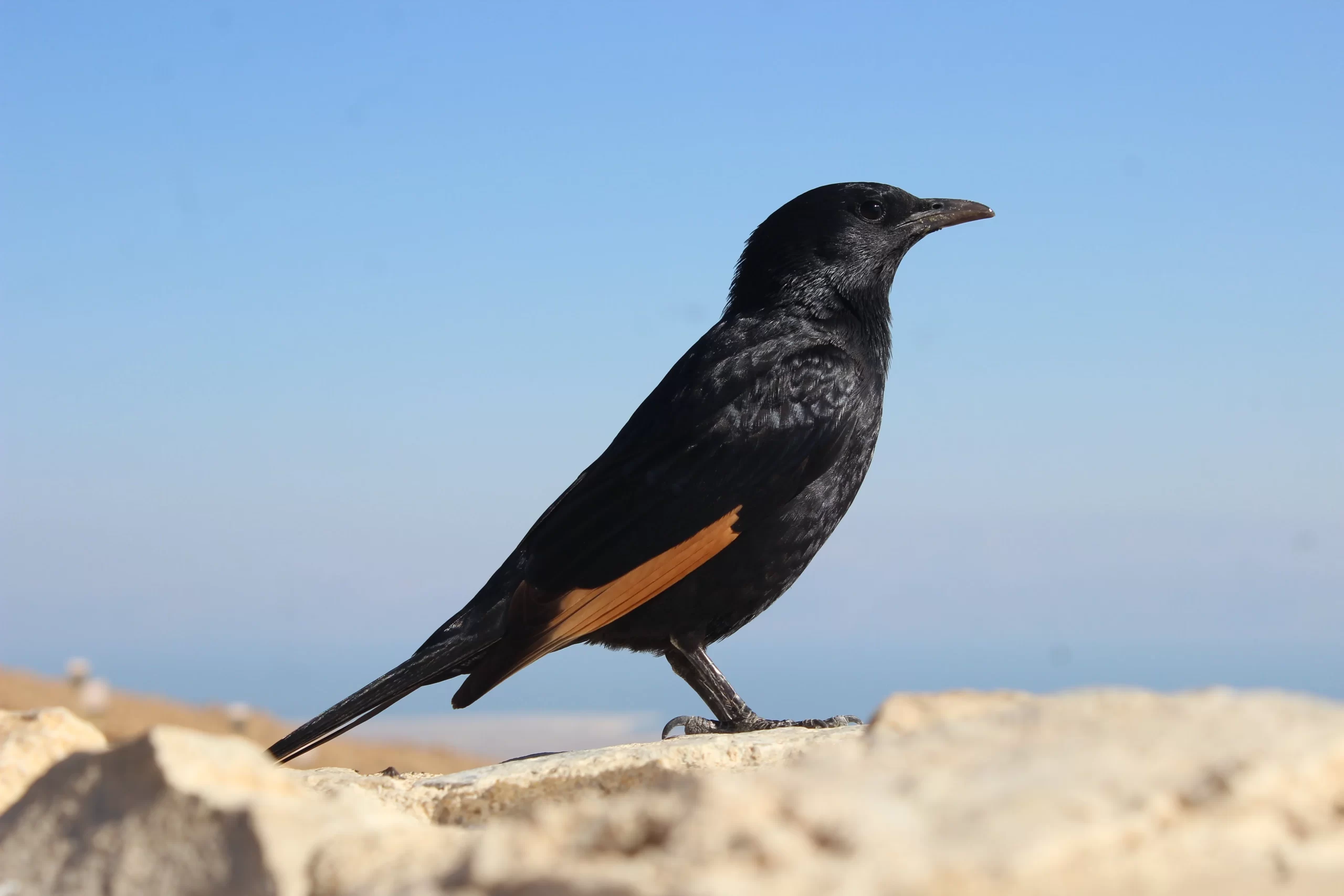Differentiating a starling vs grackle can be challenging. Both a grackle or starling look similar to the untrained eye. What’s more, both starlings and grackles are considered to be nuisances by some.
Therefore, it can be difficult to separate these two birds when they visit your backyard. Not to worry – this guide will describe all of the similarities and differences in the grackle vs starling debate. Let’s take a look:
Table of Contents
What Is A Starling?
Starlings may look like blackbirds, but they are actually members of the Sturnidae bird family. More than 100 species of starlings exist, and these creatures are quite diverse in their appearance. Many appear to have glossy feathers due to the iridescence that they possess. Having black feathers is common for the majority of starlings, but there are plenty that have colorful plumage instead. Starlings tend to have heavy bills that are quite useful for their diets.
Although grackles are some of the many birds that look like starlings, it’s easy to separate the two families of birds.
What Is A Grackle?
Grackles are birds that look like starlings to the untrained eye. Luckily, differentiating a grackle vs starling is not difficult if you know what to look for.
There are 10 extant species with the word “grackle” in their name. All 10 types of grackles are members of the blackbird family. Therefore, they are related to orioles, meadowlarks, cowbirds, and other blackbirds. Additionally, it means that all of these birds are native to the Americas.
There was formerly an 11th species—the Slender-billed Grackle—that was part of this group. The Slender-billed Grackle was closely related to the Great-tailed Grackle, but it is now extinct.
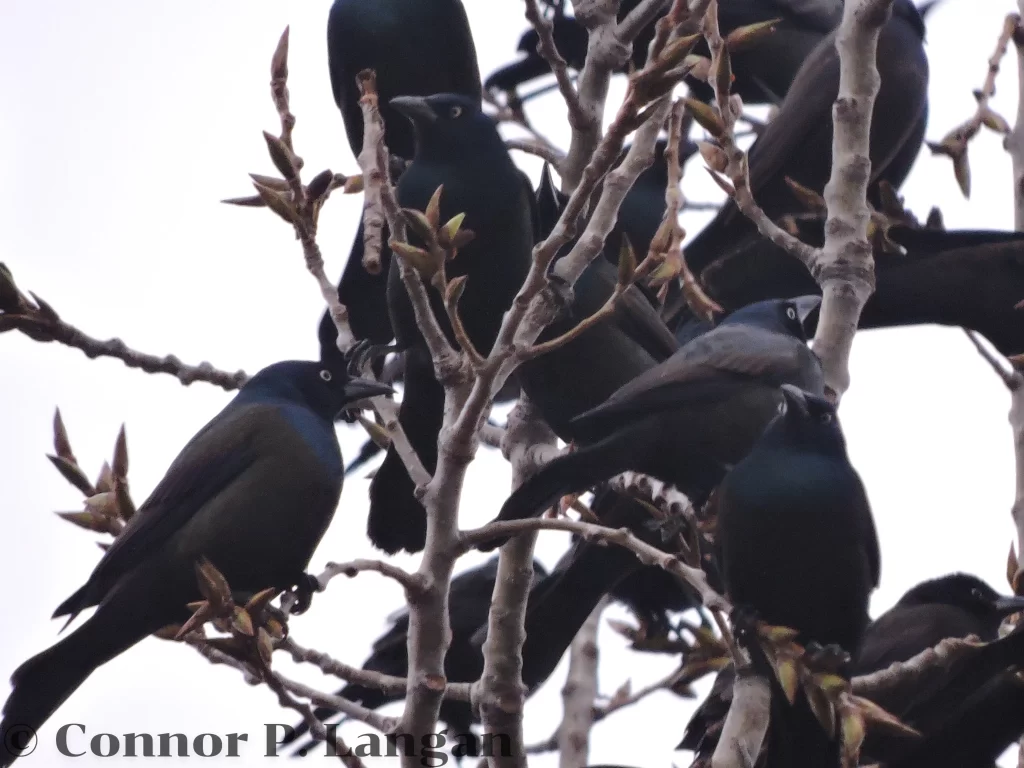
Starling Vs Grackle Size
Starlings are often considered to be medium-sized songbirds, while grackles are large songbirds. Therefore, size can be a big difference between grackles and starlings. Some starling species are tiny, as the Abbott’s Starling barely weighs more than an ounce. Meanwhile, the Kenrick’s Starling measures a measly 6 inches in length. However, the Common Hill Myna is on the opposite end of the size spectrum, being about 14 inches long and weighing 14 ounces. The White-necked Myna is the longest bird in the family, measuring 19 inches thanks to its massive tail.
Grackles are far bigger than most starlings. Many consider grackles to be large songbirds. Indeed, these blackbirds are larger than practically any other songbirds. The Great-tailed Grackle is the largest grackle, with males weighing 9 ounces and measuring 15 inches long.
Therefore, the heaviest starling weighs more than the heaviest grackle, while the longest starling is longer than the longest grackle. However, when considering starlings vs grackle size as a whole, grackles are far bigger on average compared to most starlings. For instance, when comparing a European Starling vs grackle, the starling would be far smaller.
Grackle Vs Starling Diet
A grackles vs starling diet comparison will reveal that these birds consume similar items. Both starlings and grackles are opportunistic in their diets, eating various fruits and insects. These items comprise the majority of starling diets. However, these birds will also feed on garbage, bird eggs, suet, seeds, and nectar. Starlings are regarded as a pest by some because they can cause significant damage to crops of fruit.
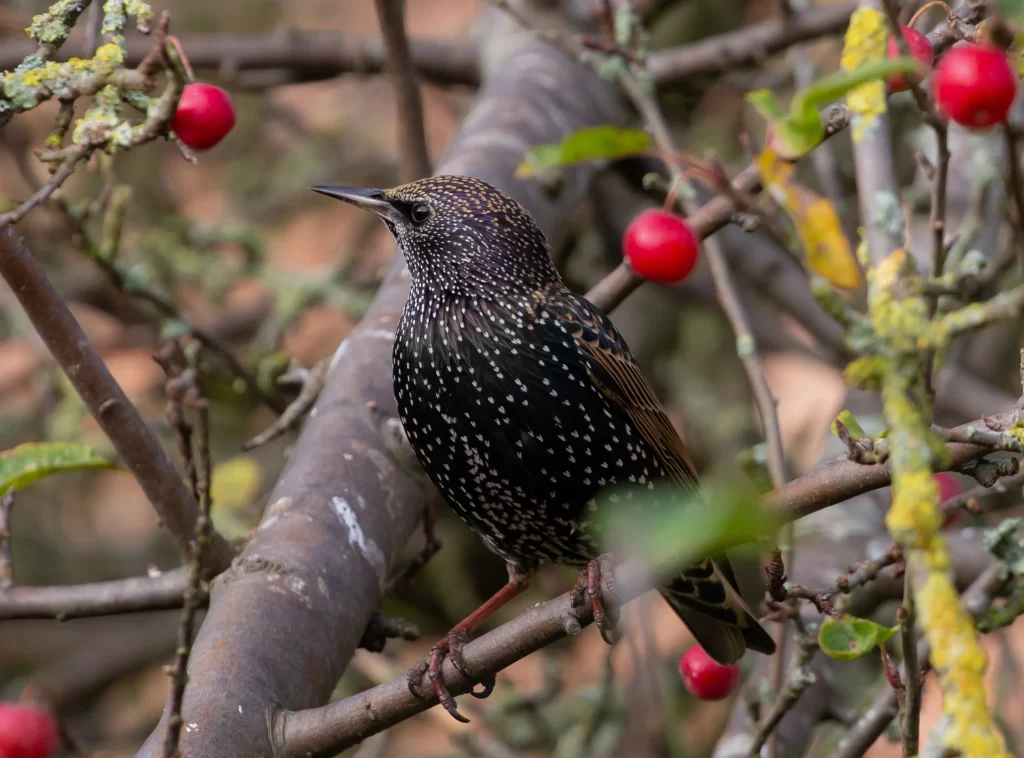
Grackles have similar adaptability in their diets. Seeds comprise the majority of a grackle’s diet, but they also eat animals during the breeding season. Insects, small lizards, birds and eggs, and small mammals may be on the menu for some grackles. Females tend to eat more animal matter than males.
Much like seagulls, starlings or grackles who live around humans have evolved to eat human food scraps and garbage. This is about the only similarity when assessing starling vs grackle diets.
Both grackles and starlings may visit bird feeders. Here, a starling or grackle will bully other birds and hoard the food. Even House Sparrows–which typically are bullies themselves–are no match for a grackle or starling. In fact, grackles can be so pushy at bird feeders that even the staunchest birds wish to get rid of them.
There’s certainly quite a bit of overlap between starling vs grackle diets.
Behavior
Starlings are naturally gregarious, so these birds love being in the presence of other starlings. Some starlings form massive groups known as murmurations during the nonbreeding season. Moreover, some starlings may migrate in these groups, but many starlings are nonmigratory.
Although starlings are never the biggest birds in their habitats, they are known to be quite aggressive. Starlings will harass other songbirds—sometimes killing them–so they can secure the best nesting locations.
Grackle vs starling behavior is an area where these two birds have some similarities. For instance, starlings and grackles are both gregarious by nature. Species such as Boat-tailed, Great-tailed, and Common Grackles gather into enormous flocks during the nonbreeding season. These flocks of birds that look like starlings may also contain Red-winged Blackbirds, Brown-headed Cowbirds, and even European Starlings. They remain with these groups for months, and they develop a routine in which they forage during the day before returning to communal roosts in the evening.
Grackle migration spectacles can be a sight to see, but they do not form murmurations like some species of starling. This is a big difference between starling and grackle behavior.
Those who have had a grackle flock visit their property know that these birds are quite vocal, making a wide array of noises as they communicate with one another. Species like Common Grackles may visit bird feeders. Here, they act similar to Blue Jays as they drive all other birds away thanks to their size and bold personalities. Therefore, a grackle or starling can be quite bold and aggressive.
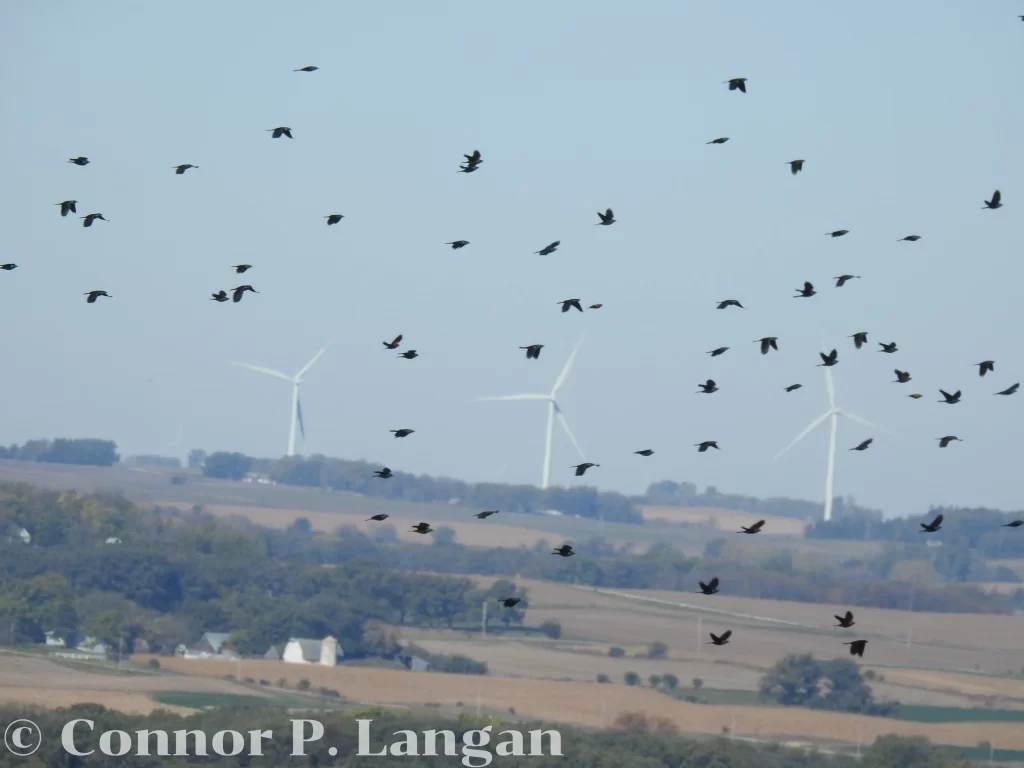
Breeding
Starling Breeding
Starlings are like many songbirds in their breeding ecology, being socially monogamous. However, they often find new mates every year. Males and females remain paired during the breeding season, but they may seek extra-pair copulations.
Considering the European Starling, both males and females construct the nest and incubate the eggs. The males of many other starling species likely assist with the parenting process.
Grackle Breeding
Grackle vs starling breeding differs in that grackles have multiple different mating systems. Indeed, several breeding systems have been noted among these blackbirds. For instance, Common Grackles are seemingly socially monogamous. Birds find mates each spring and remain paired during the breeding season. This species occasionally nests in the presence of many others of their own kind. Birds in these colonies are rarely aggressive towards their counterparts. Males commonly assist females with parenting duties.
Great-tailed Grackle males stake out a piece of territory in the spring. Females who find their territory to be appealing will construct nests and mate with the territorial male. Successful males may host a single female or several different females on their territory. On the other hand, unsuccessful males will not attract females to their territory, but they may secure mating events via extra-pair copulations. Males do not assist females with parenting responsibilities.
Boat-tailed Grackles practice a harem mating system whereby a single, dominant male mates with many females. The most vigorous males drive off other males and lay claim to the premium patches of breeding territory. These males then mate with all of the females that build nests on their territory. Studies have shown that the males who do not establish territories may secure extra-pair copulations anyway. Males do not assist females with any parenting duties.
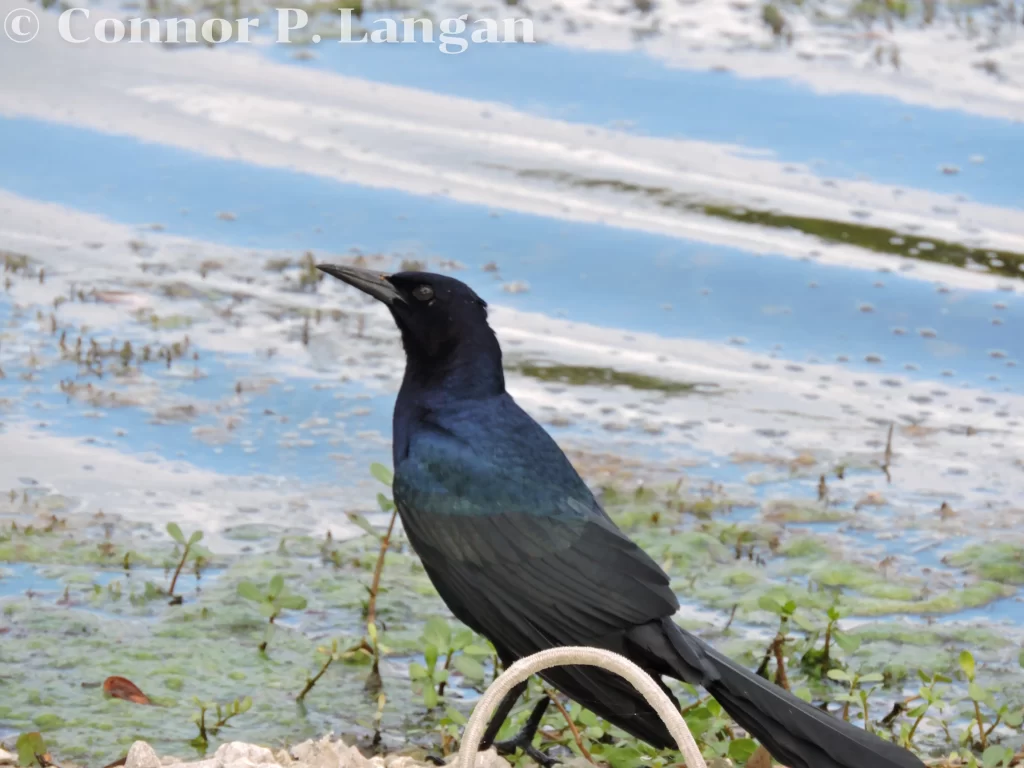
Both grackles and starlings are diligent parents. However, unlike starlings, grackles are not cavity nesters. Therefore, you will not have them vying for a spot in your birdhouse.
Habitat Preferences
Considering the immense diversity of starlings, it is unsurprising that these birds can be found in a wide array of different habitats. Some starlings are adapted to living in coniferous forests or rainforests, while others prefer semi-open habitats. Starlings can be found in most habitat types throughout their range save for arid deserts. Unlike many other bird species, starlings tend to do well in landscapes altered by humans. This enables them to survive in areas where many other birds would perish.
Like starlings, grackles can be found in a surprising array of habitats. Species like Common Grackles are birds like starlings in that they’re adaptable in habitat usage. Indeed, they may breed in parks, forest edges, cemeteries, field windbreaks, and many more locations. Species such as the Boat-tailed, Great-tailed, and Nicaraguan Grackle breed in marshy areas. Red-bellied Grackles and Mountain Grackles breed in tropical rainforests.
Distribution
Starlings are historically native to Europe, Asia, and Africa. However, these birds have been introduced to many different locations with varying success. The European Starling has enjoyed the greatest success in new lands of perhaps any bird species, as it is now one of the most common birds in North America.
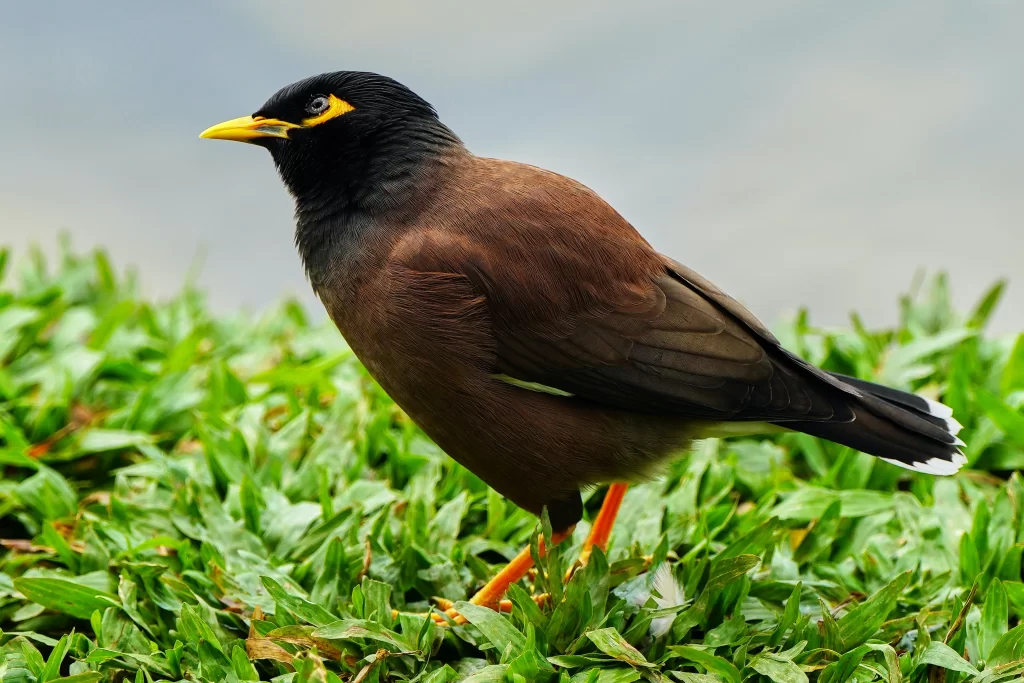
Grackles have a much simpler distribution than starlings, as these birds are only found in the Americas. Therefore, grackles and starlings never would have historically overlapped in their distribution – a big difference in the starling vs grackle debate.
Alas, birders may find a starling or grackle in the Americas, as European Starlings, Common Mynas, and Common Hill Mynas have now been introduced. Here, they overlap with several grackle species, and grackles and starlings readily commingle.

